“Dead Calm”: Nofen Set A40 Fanless System Review

Our today’s article is dedicated to a passive computer system designed for those who cares most about the acoustics and tries to minimize the noise at all costs. Looks like due to the new Nofen system, this is no longer such a big problem.
The South Korean Nofen Corporation was created not long ago, in August of 2010, by a few professionals from the well-known Korean Zalman Company. Therefore, the product range offered by this company is currently not very diverse and their primary focus is on quiet PC system components. Among them are computer cases, power supply units and processor cooling solutions. No wonder that the company’s slogan is the following:

Among the Nofen’s first products are complex systems including a compact Set A40 and a top of the line Set A43. Our today’s article will introduce to you the junior solution of the two – Set A40 system.
CS-30 System Case and P-400A Power Supply Unit
The system is shipped in a medium-sized box with a photo of an open system case on the front and a list of its key features on the back:
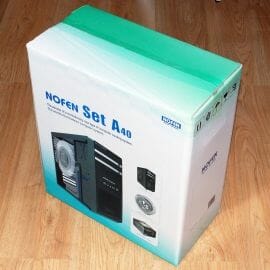
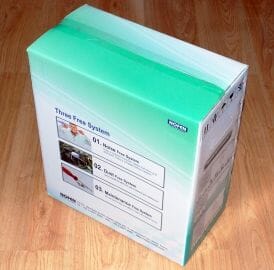
The detailed specifications of all three components of the Nofen Set A40 are listed on one of the package sides:
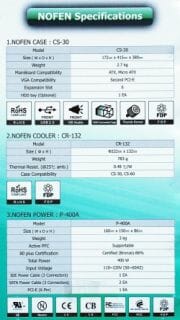
Among them are the system case, processor heatsink and a fanless PSU. They are accompanied by corresponding manuals (in our case also including a manual for the Foxconn mainboard) and a tube of thermal grease:
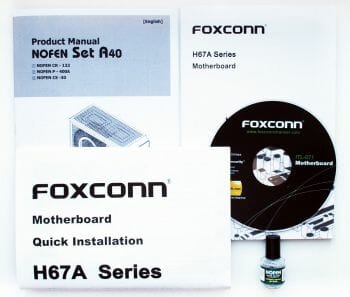
Nofen CS-300 case is very compact in size, it measures only 172x415x380 mm and weighs 2.7 kg. The front panel is made of plastic and doesn’t stand out too much but at the same time is not dull due to a glossy upper half and silver inserts in the 5-inch bay covers:
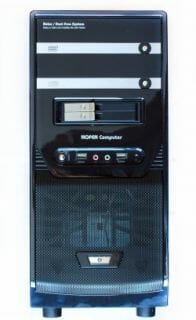
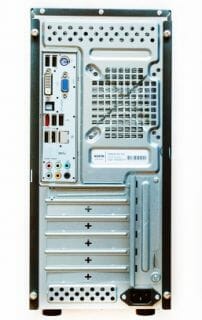
The bottom part of the front panel is meshed with a wide On/Off button in the middle. The Clear CMOS button is smaller and is located almost in the center of the front panel next to the two USB ports, microphone and headset Outs and HDD activity indicator. The back case panel is made of aluminum. There is a spot for an 80 or 92 mm fan, bent holes at the bottom and at the top, and a power supply connector, although the PSU itself will definitely not be there. But we’ll get to this in a little bit.
Both side panels are perforated in a honey-comb pattern:
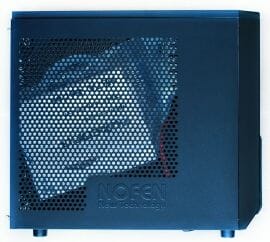
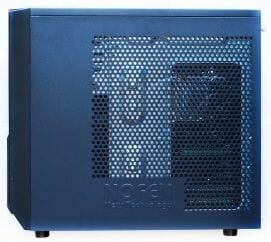
We see the same perforation on the case top panel as well:
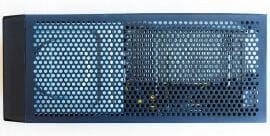
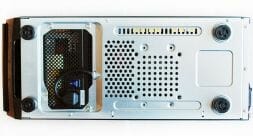
You can see a PSU and another spot for an 80 mm fan at the bottom.
The side panels are fastened with a pair of screws that can be undone without any screwdriver, so both panels are very easy to remove:
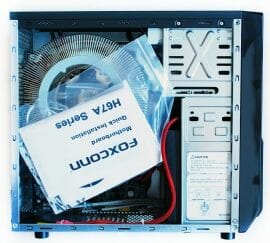
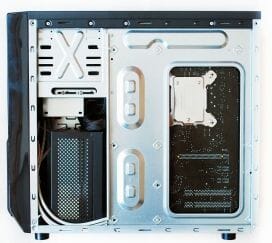
After that we see everything that’s hidden inside the case and we find out that the power supply unit is installed vertically in the front part of the case directly behind the plastic mesh, and the power cable is simply laid out on the back panel. So, the PSU takes over the entire front of the case, where you won’t be able to put any hard drives or even fit an additional fan. By the way, although the case does have special spots for fans, Nofen denies the need for any fans, because it will not only increase the level of generated noise but the dust sucked in from the outside will disturb the entire cooling concept, which is mentioned on the sticker:
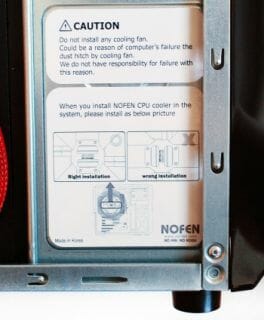
The power supply unit is practically “sealed” inside the system case, so if we wanted to remove it for a closer look, we would have to ruin the entire internal organization of the case, including the cables arranged carefully along the corners of the system and fastened with ties. Therefore, we will only provide the specifications of the PSU taken from the Nofen web-site. P-400A PSU has a capacity of 400 W, which you can actually guess from the model name. The unit is certified as 80 PLUS Bronze and should have at least 86% efficiency. In fact, it is way too powerful for a system of this class, because Set A40 system will hardly accommodate a very powerful graphics accelerator, and the rest of the components should have more than enough power, no matter how high-end they are.
As for other peculiarities of the P-400A PSU, we should definitely mention that it measures 160x150x86 mm and weighs 3 kg. I would like to remind you that it has a passive heatsink, i.e. comes without any fans. Besides the mainboard power cables, there are also three PATA cables, two SATA cables with three connectors on each one, and one cable with a six-pin power connector for the graphics card:
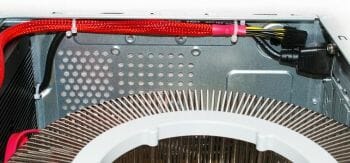
The latter is hardly necessary because when the Nofen CR-100 heatsink is installed onto the CPU, it is extremely difficult to install a graphics cards into the system.
The case has two 5.25-inch bays with a DVD-drive in the top one, and comes without any 3.5-inch bays at all. Not even one. And all that is because the power supply unit occupied the good half of the front area inside the case, where the hard disk drives usually are. Note that Nofen doesn’t consider it to be an issue that you can’t install any 3.5-inch HDDs into their system, because these hard drives are noisy and the entire concept of the new Nofen system is based on complete silence. Therefore, all data storage in systems like that is assigned to SSDs, which can go into two bays in the front of the system case:
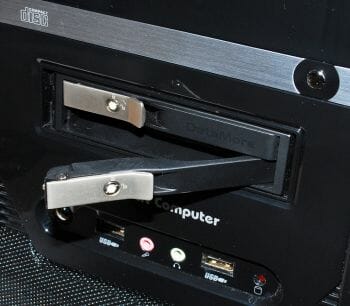
The bays are very convenient, all the cables are already connected to them: just insert the SSD into the bay and lock it in place with a clip-on bracket. Nevertheless, keeping in mind that contemporary SSDs are still pretty small when it comes to storage capacity (or pretty expensive when the capacity is higher), many Nofen Set A40 owners may still want to add a large HDD to their system. You can do it by adding a HDD chassis (like the ones we reviewed in one of our roundups) into one of the available 5.25-inch bays.
Well, that’s about all I could tell you about the case itself, so let’s move on to the processor heatsink now.
CR-100A CPU Heatsink
Nofen CR-100A heatsink is undoubtedly the most interesting part of Nofen Set A40 system. It is pretty large and of a truly unique shape. Take a look:
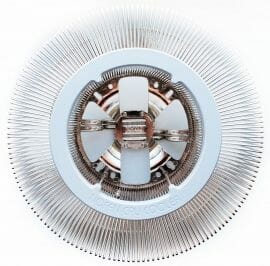
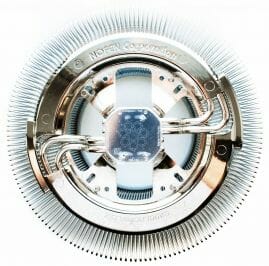
And now imagine that the diameter of this large heatsink is 222 mm and it is 132 mm tall! Being that enormous Nofen CR-100A occupies the entire compact system case and covers everything there is on the mainboard. We are going to see it later one when we will be putting this system together, and at this point I only have to add that it weighs 783 g.
The design of this heatsink is fairly simple. There are four 6 mm copper nickel-plated heatpipes coming out of the copper base. They are split in two pairs going different directions and form two semi-circles. Beneath the heatpipes there are two grooves with the manufacturer’s name embossed in their bottom part. Numerous fins made of 2 mm aluminum wire are soldered to the top of the heatpipes:
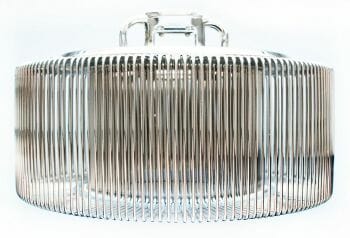
In fact, these wires are the heat- dissipating surface of the heatsink. So, it is hard to say what the effective heatsink surface is in this case.
Heatpipes lie inside special grooves and are soldered to the base plate:
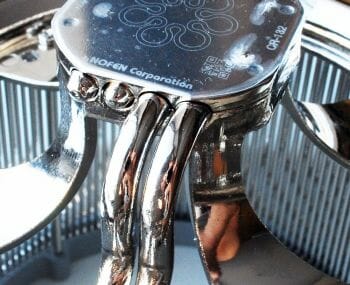
The thinnest part of the copper nickel-plated base beneath the heatpipes is 2 mm.
The base is impeccably even and is polished to mirror shining perfection. Moreover, it has a sophisticated flower drawn on its surface:
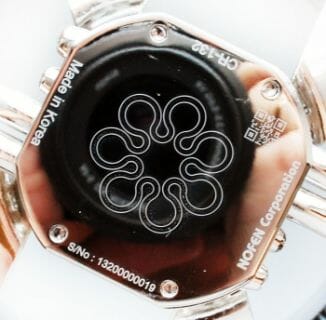
We saw the same flower on the box of our Nofen Set A40 system with “FDP” abbreviation below it. We didn’t manage to find out what this abbreviation stands for. It could be some kind of a marketing trick or the name of a new secret technology.
The photographs below show the thermal grease imprints left by the heat-spreaders of our processors on the cooler base:
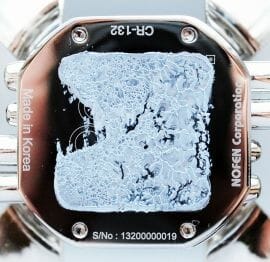
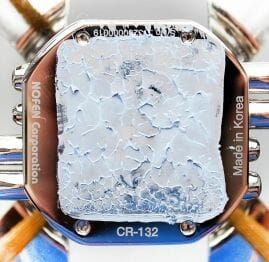
The LGA1155 processor has an unevenly convex heat-spreader, so the imprint also turned out asymmetrical. At the same time the heat-spreader of our LGA1366 processor left a decent imprint on the Nofen CR-100A base, although we had to use more thermal grease than normal.
Nofen CR-100A comes without any fans and there is no spot for a fan anyway. In other words, the heatsink should provide effective cooling solely due to its size and unique design. Note that the manufacturer doesn’t overestimate the system’s potential by setting excessively ambitious goals and warns the users that the maximum processor TDP that their Nofen CR-100A heatsink can cope with shouldn’t get beyond 100 W. there is a very easy-to-read diagram about it on their official web-site:
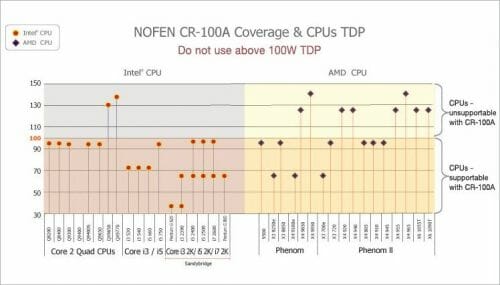
It shows clearly what processors can be cooled with a Nofen CR-100A heatsink and what processors shouldn’t.
Another thing to keep in mind during the heatsink installation is the correct positioning of the heatsink on the CPU. Nofen addresses this matter on the following picture:
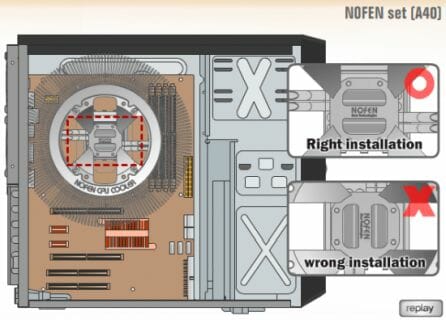
It shows that the heatsink must be installed with the heatpipes coming out of the base in a horizontal plane, and not up or down, which is also a possible way to install.
The heatsink is then fastened using a special backplate at the bottom of the PCB…
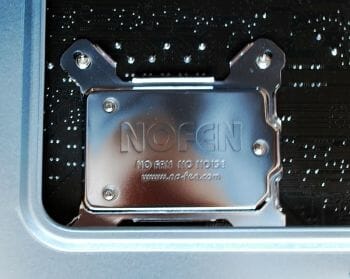
And a set of four screws that go into special tall bushes:
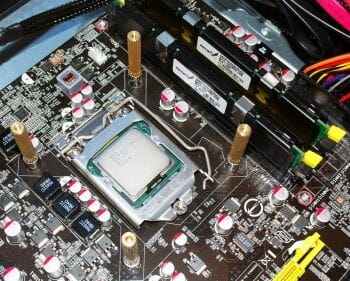
The heatsink is pressed very firmly against the processor due to the presence of springs on the screws, and the retention itself is highly reliable for a heatsink of this size (it is not too heavy after all).
When the heatsink is installed onto the processor there is a 40 mm gap between the PCB and the lowest heatsink fin, so the memory modules with tall heat-spreaders will definitely not fit in there. Moreover, forget about any tall components within 115 mm distance from the processor heat-spreader. For example, this is what Nofen CR-100A looks like on Foxconn H67A-S mainboard inside the Nofen CS-30 system case:
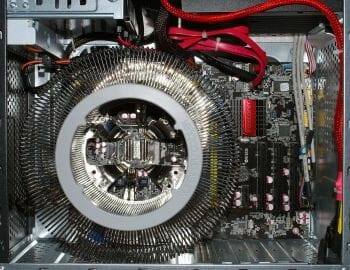
Looks very crowded, I should say. The only PCI Express slot on the mainboard is completely covered by the heatsink. However, the ATX mainboard barely fits into a case like that even without the heatsink on it:
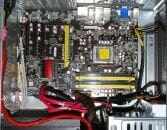
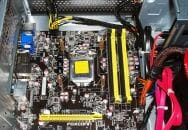
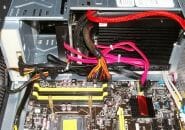
I am sure you understand that it is all caused by the small system case. And to make your life easier, Nofen lists all the mainboards compatible with this case and the processor heatsink on their official web-site:
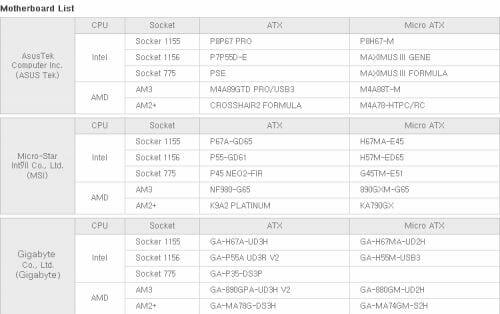
At this point the list is pretty short, but I am sure it will grow bigger with time.
I would also like to add that although Nofen doesn’t offer too many products at this time, they also have a slightly larger case – CS-60. You can use this case for a fanless system with a proper mainboard featuring several PCI express slots and a discrete graphics card.
Technical Specifications and Recommended Pricing
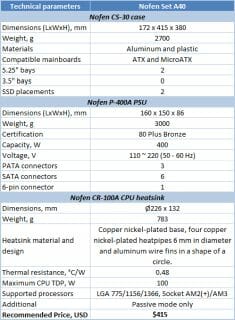
Testbed and Methods
We assembled the following system inside our Nofen CS-30 system case:
- Mainboard: Foxconn H67A-S (Intel H67, LGA 1155, BIOS from 03/11/2011);
- Processor: Intel Core i5-2500K, 3.3 GHz, 1.15 V, 256 KB L2, 6 MB L3 (Sandy Bridge, D2);
- Thermal interface: Gelid GX-Extreme;
- Memory: DDR3 2 x 2 GB WinTec AMPX (Spec: 1600MHz / 7-7-7-24 / 1.65 V);
- System drive: OCZ Agility EX SSD (SATA-II, 60 GB, SLC, Indillinx controller, firmware v1.31);
- DVD drive;
- System case: Nofen CS-30;
- Power supply: Nofen P-400A (400 W).
Although the mainboard doesn’t have any functionality for processor overclocking, Intel Core i5-2500K thermal envelope was almost maximum for Nofen CR-100A – 95 W. So, we believe that a CPU like that should be more than enough to check out the efficiency of this heatsink.
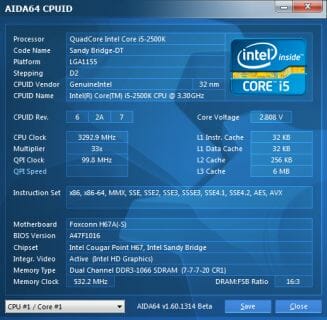
The system case was set inside a half-open niche in the computer desk:
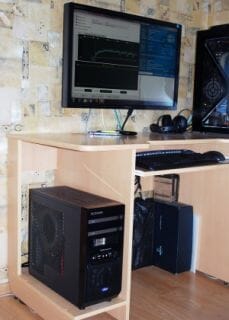
Remember that this system doesn’t have a single fan in it.
To create appropriate workload we used system stability test from AIDA64 v1.60.1314 Beta. The temperatures were monitored using the same program:
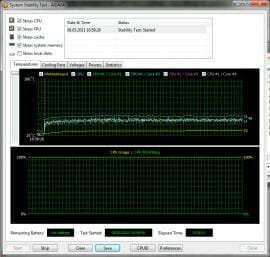
As you understand, it doesn’t make any sense to worm up the HDDs in our case, so we removed the marker in the corresponding checkbox.
Nofen CR-100A will be competing against the inexpensive Cooler Master Hyper 212 Plus:
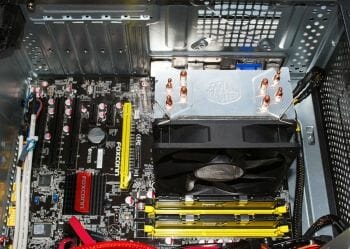
And we lowered the rotation speed f its single default 120 mm fan to 600 RPM to make sure that it didn’t freak out the silent Nofen Set A40 system.
Besides this test, we also tested the cooling efficiency of Nofen CR-100A on our default LGA1366 platform assembled inside Antec Twelve Hundred system case (you can check out is hardware configuration in this review, for example). In this case the newcomer will be competing against the best passive heatsink – Thermalright HR-02:
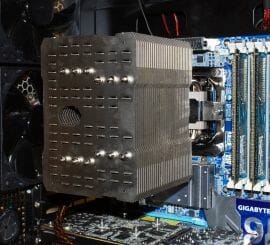
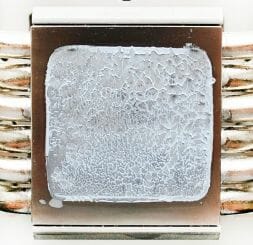
The load was still created using AIDA64 stability test. Now let’s check out the obtained results.
Cooling Efficiency Tests
Take a look:
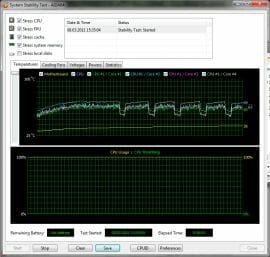
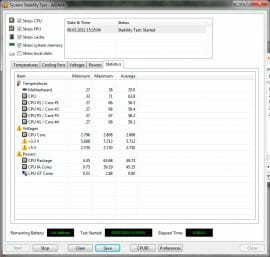
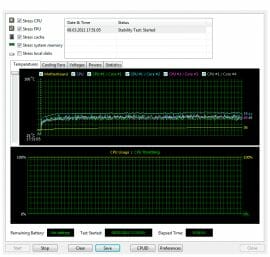
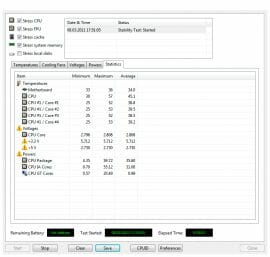
First of all I would like to point out that inside the fanless system case a fast CPU like Intel Core i5-2500K cooled with a passive Nofen CR-100A heatsink remains stable enough and the peak temperature of its cores doesn’t exceed 68°C. This is an excellent result, I have to say. By the way, the load created by the AIDA64 stability test is just a little lower than the load created by the famous Linpack, so the results demonstrated by the compact system case without a single fan deserve our genuine respect. If we compare the cooling efficiency of the Nofen CR-100A with that of a Cooler Master Hyper 212 Plus at 600 RPM, we will see that the active cooler defeats the passive one with the temperature differences reaching 15 degrees. However, it hardly matters at the maximum temperature of 68°C under Nofen CR-100A, especially since the system is no longer silent with an active cooler inside.
Now let’s see how good Nofen CR-100A is going to be on a hot six-core CPU in the race against Thermalright HR-02. I would like to remind you that we have efficient and pretty quiet fans inside our Antec twelve Hundred system case, so it would hardly be correct to claim that the heatsink worked in a true passive mode. But these fans helped Nofen CR-100A just as much as they helped Thermalright HR-02, so this comparison should be considered fair. Here I also have to add that we set the multiplier of our six-core processor 1 point lower, because Nofen CR-100A couldn’t maintain processor stability at its nominal clock despite the fact that the temperature still was quite far from the throttling limit (looks like the VRM circuits got overheated after all). We didn’t experience the same problem with Thermalright HR-02.
Here are the obtained results:
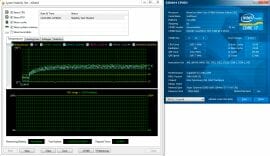
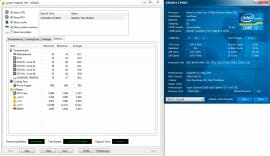
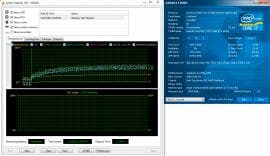
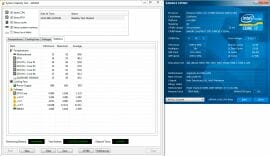
66°C on the hottest core under peak load with the thermal envelop 1.3 times higher than the maximum for Nofen CR-100A – isn’t that a brilliant result? According to the official specifications Nofen CR-100A shouldn’t be installed on powerful CPUs like that at all. Moreover, Nofen heatsink fell only 2°C behind the best passive cooler out there – Thermalright HR-02. To be fair I have to say that Thermalright HR-02 allows overclocking six-core processors, while it is an unattainable goal for a cylindrical Nofen CR-100A heatsink.
Conclusion
Fanless Nofen Set A40 system is a very interesting product that has no analogies in the today’s market. When we say “analogues” we mean something presented in the same form – as a set of a system case, fanless PSU and a unique CPU heatsink that have been all set to work seamlessly together. When you evaluate Nofen Set A40, it is important to understand that this is a solution for a specific user group, who care about quiet operation. So, this set will suit the needs of music lovers or may become a good option for a home media center PC, while it will be totally useless for enthusiasts or gamers, who need not only a powerful processor but also a fast graphics card, which may be challenging to fit into a Nofen Set A40 system.
Among the drawbacks of the Nofen Set A40 system we could mention the absence of special spots for conventional HDDs, which could fit into the 5-inch bay equipped with a special silencer box, for instance. Moreover, we consider the MSRP of the Nofen Set A40 system set at $415 to be a little too high, because an inexpensive system case and a good PSU with 400 W capacity will not exceed $60. Another $60 could be the price of the Nofen CR-100A heatsink, plus some extra for different marketing things and profit margin. In the end it could all come down to $199, which is a much more appealing price point for the end users. And if they also included a 5.25-inch silencer, things could have been close to perfect.
Despite pretty high price, Nofen did a great job on designing a truly unique fanless system that is why we are proud to award Nofen Set A40 with our Ultimate Innovation title:
